I’m a total prop guy, meaning I love seeing elements of craftsmanship, design principles and talented vision all come together in dramatic productions. Let’s face it: props add to the authenticity and realism of any dramatic production. They contribute to the performers’ abilities to present a character, and they also make any loyal fan covet and drool in envy when shown for the first time.
It’s no different in Star Trek: Discovery. Imagine how those folks feel in being the ones to decide what those props should look like. Luckily, I had a chance to find out, as I had an opportunity last month to chat with series prop master Mario Moreira about his work in the latest chapter of the Star Trek saga, and some of his favorite pieces from the second year of the show.
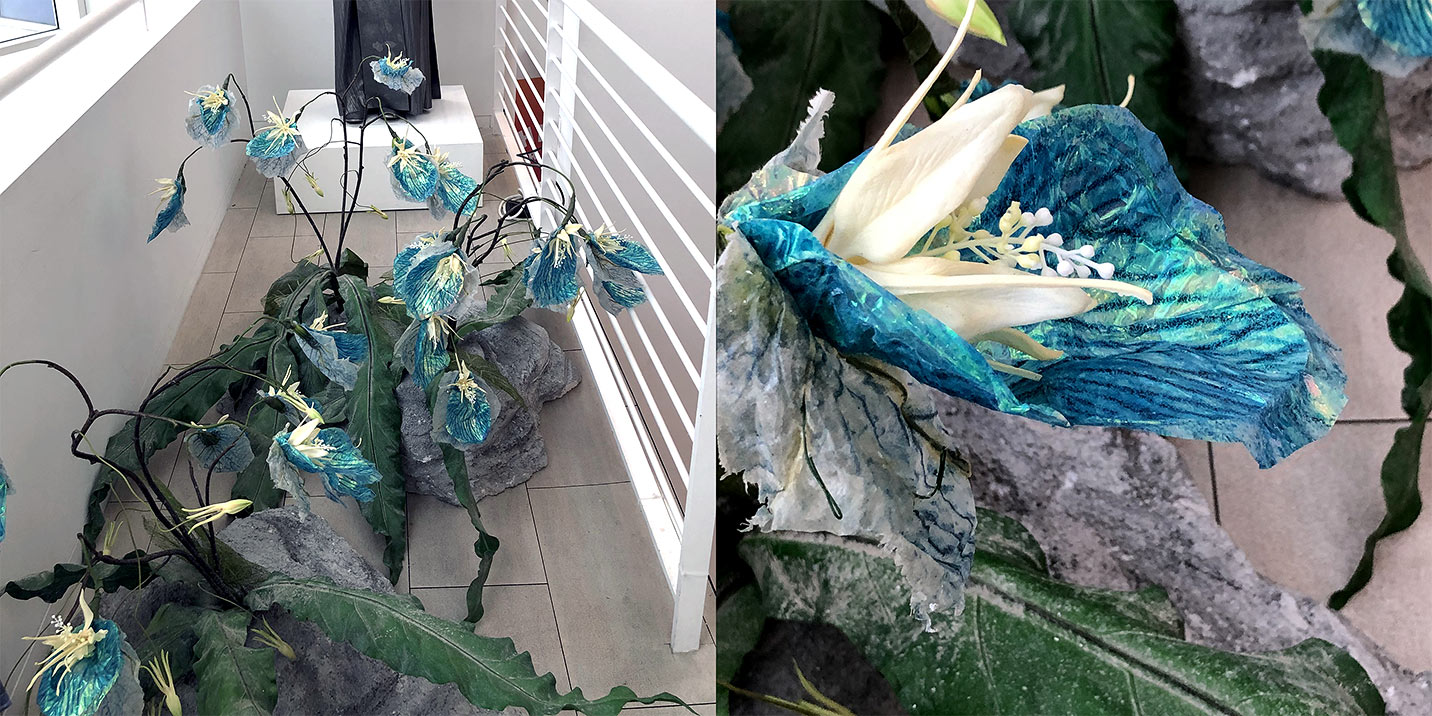
Moreira’s credits include Starhunter along with other rich Canadian sci-fi productions like Killjoys and The Expanse, and I had to ask about separated the prop design in Discovery from some of the items he constructed for those other shows.
“On Killjoys, we did what I call ‘mutt-builds,’ where we start with an existing product,” Moreira told me. “We did a lot of cladding of air-soft weaponry [to turn it into space weapons]. For Star Trek, everything in Discovery is straight from design; 3-D printed, aluminum-milled products. Nothing we work with is from another product, it’s all from our design.”
The debut of Discovery in 2017 brought many familiar Star Trek props into the 21st century, from the classic Type II hand phasers to new takes on the old-school flip-open Starfleet communicators and tricorders — and Season 2 added even more new builds to the Discovery collection, from all-new constructs to a reimagination of a memorable 1960s design.
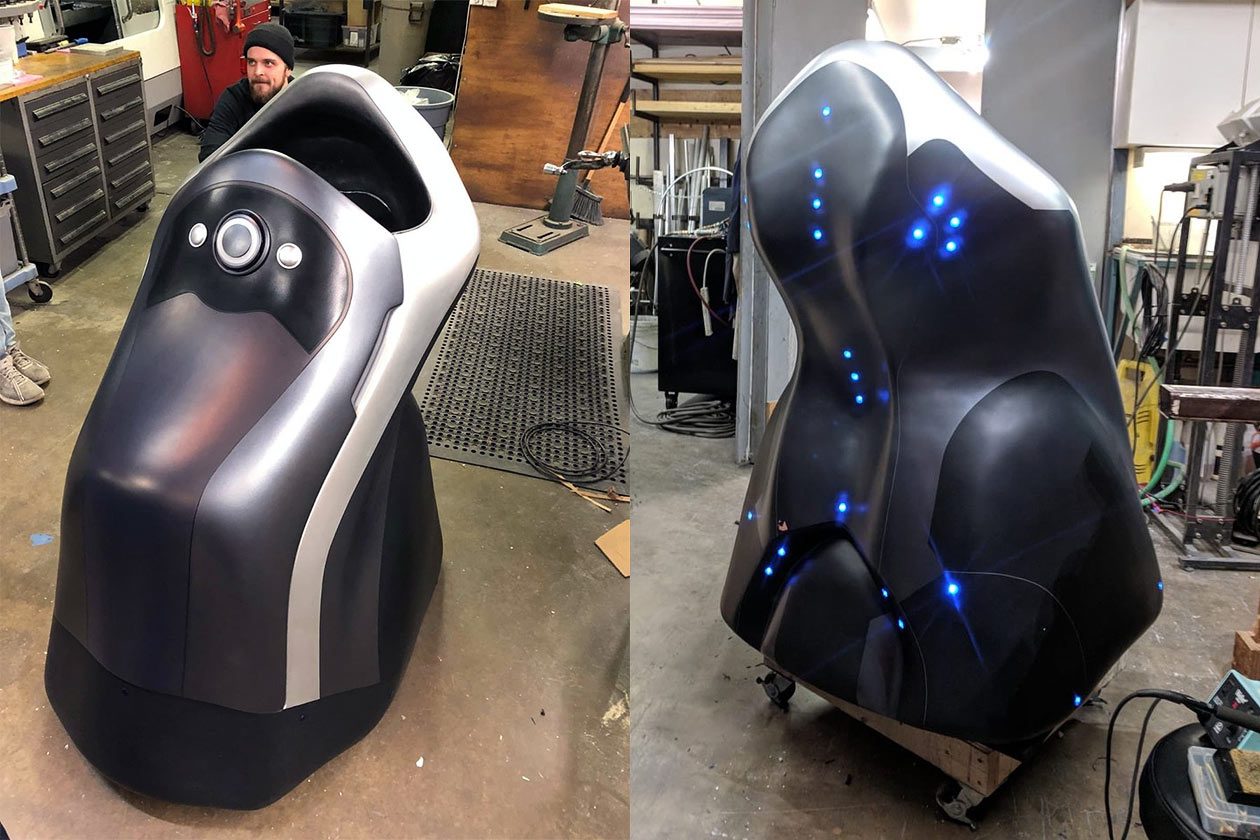
To start, I had to ask Moreira about the surprising appearance of Captain Pike’s iconic support wheelchair, updated from its appearance in “The Menagerie” for 2019’s “Through the Valley of Shadows,” where Pike (Anson Mount) experienced a vision of his own tragic future.
“That was a really fantastic build,” said Moreira. “Concept artist [and series lead creature designer] Neville Page when full steam ahead on that [and] presented me with the first design. I rarely do [design] tweaks when I work with Neville, because his mind is so out there – and he is so in love with Star Trek that he wouldn’t want to disrespect the canon in terms of the futurist look.”
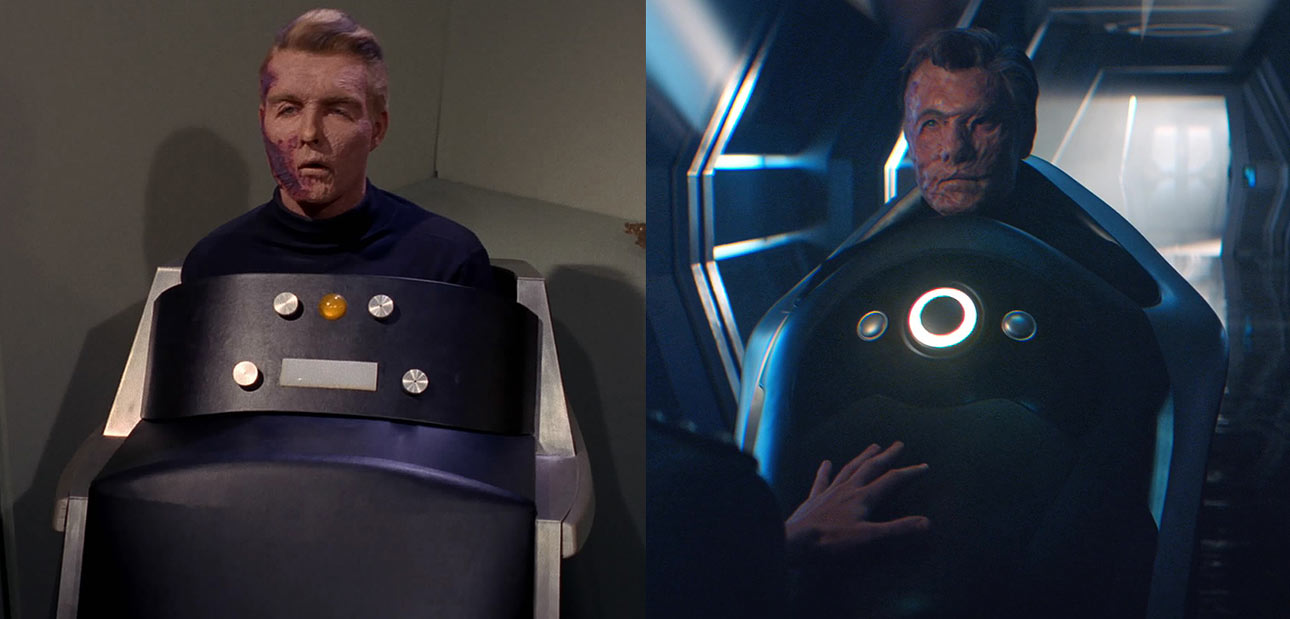
“It’s probably as close to the original Trek prop as any of our [pieces] are,” he continued. “While I’m not sure exactly how the original was built – it was probably just a wooden box – our version was milled out of a thick piece of high-density foam, and the front door [for Mount to get in the chair] comes off with magnets. It was hand-carved, hand-smoothed, and built with auto body fiber-glassing, then it was glazed and painted.
In terms of the overall build, it was a pretty tight schedule to get that thing turned around, and we had one little tweak that had to be done to the back wheel, but it’s a very traditional build in a sense.”
I was trying to imagine the process as Mario described it: the tools, the worktable… it was a fascinating experience to hear about the work and Mario’s pride in it was obvious.

Moving from an homage to the past to a danger from the future, the next item on Moreira’s list of favorites was the deadly Control-powered tentacle from “Light and Shadows,” a largely digital effect that needed to become tangible for actors Anson Mount and Shazad Latif (Tyler) to grapple with.
“We had a real kick out of building the AI tentacle that came from the future,” Moreira said. “The big tentacle [the actors] were fighting off was largely computer generated, but at the heart of it was an actual physical prop that they were fighting with.”
While it may seem unimaginable that a robotic tentacle from a futuristic weapon might have some roots in reality, Moriera shared some of the technical work that went into building the real-life prop for the cast to work with on set.
“It started as a giant vacuum extruder hose that we ran ten-speed bicycle cables through,” he explained, “to give it both rigidity and flexibility. We gave it aluminum rings that we ran more springs through, and coated the outside body with little plastic pink and brown balls to give it ‘musculature.
A lot of its ‘life’ is just actor manipulation: as the actors moved, the thing actually fights against them, so it’s almost like a self-puppeteered prop. At first, we built it as a true puppet — that’s what the cables were for — to run it off-stage, but as the thing got heavier and more complicated, we realized it was going to be impossible to manage that way.
As I lifted it up, it kind of sprang away from me and I realized it was doing what we really wanted it to do on its own. It happens by accident sometimes!”
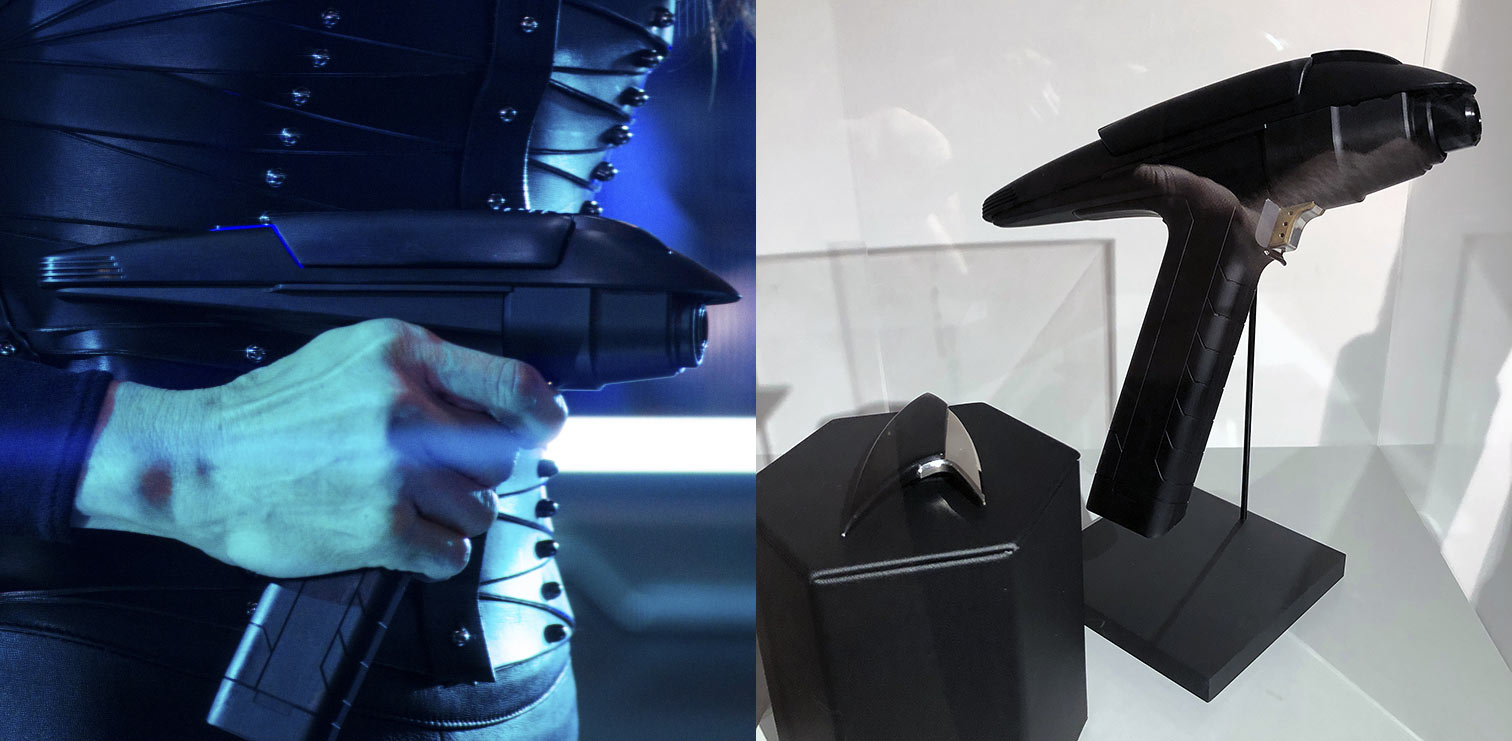
As for more present-tense weaponry, the new phaser design used by Section 31 operatives was one of my personal favorites of the year, and I’m eagerly hoping for some licensee to produce a replica that I can add to my already over-populated collection.
“We only built a few of the new Section 31 phasers [compared to the regular Discovery phasers],” Moreira laughed, “so we could be a little less cost-effective! We knew that it had to be fairly solid — since Leland was going to be in a big fight and it was going to get thrown around — so that version of the weapon is actually solid aluminum, anodized black.
The barrel actually retracts and extended for the ‘stun’ and ‘kill’ settings, which was a last-minute add to the design. We had the whole thing approved, and then [executive producer] Alex Kurtzman asked, ‘What if it did this?’ and I was like, ‘We CAN do that – because that sounds amazing!’
There’s a little motor in the body of the phaser that powers the whole thing, extending and retracting the barrel. It didn’t cost that much extra, but the detail on this thing is absolutely incredible — I love the Section 31 phaser, and if there was one prop I could take home myself it would be this one!”

While Michael Burnham (Sonequa Martin-Green) got to spend much of the show’s pilot episode in a bulky “long-haul” spacesuit with a large thruster apparatus, the opening of Discovery Season 2 allowed Moreira and his team to work up a new spacesuit design for the crew, first seen in the dangerous journey down to the Hiawatha crash site.
“I love working on space suits,” Moreira admitted, “and this show has given me a great opportunity to do that. It was so nice to work on something that was so ingrained in Star Trek lore, the new EVA suits we saw Pike, Burnham, and Nhan wearing in the beginning of the season.”
While “Brother” featured the trio in gold, red, and silver versions of the new spacesuit — along with ill-fated Lt. Connelly in blue — much of the Discovery crew got a chance to sport versions of the suit as the season progressed.
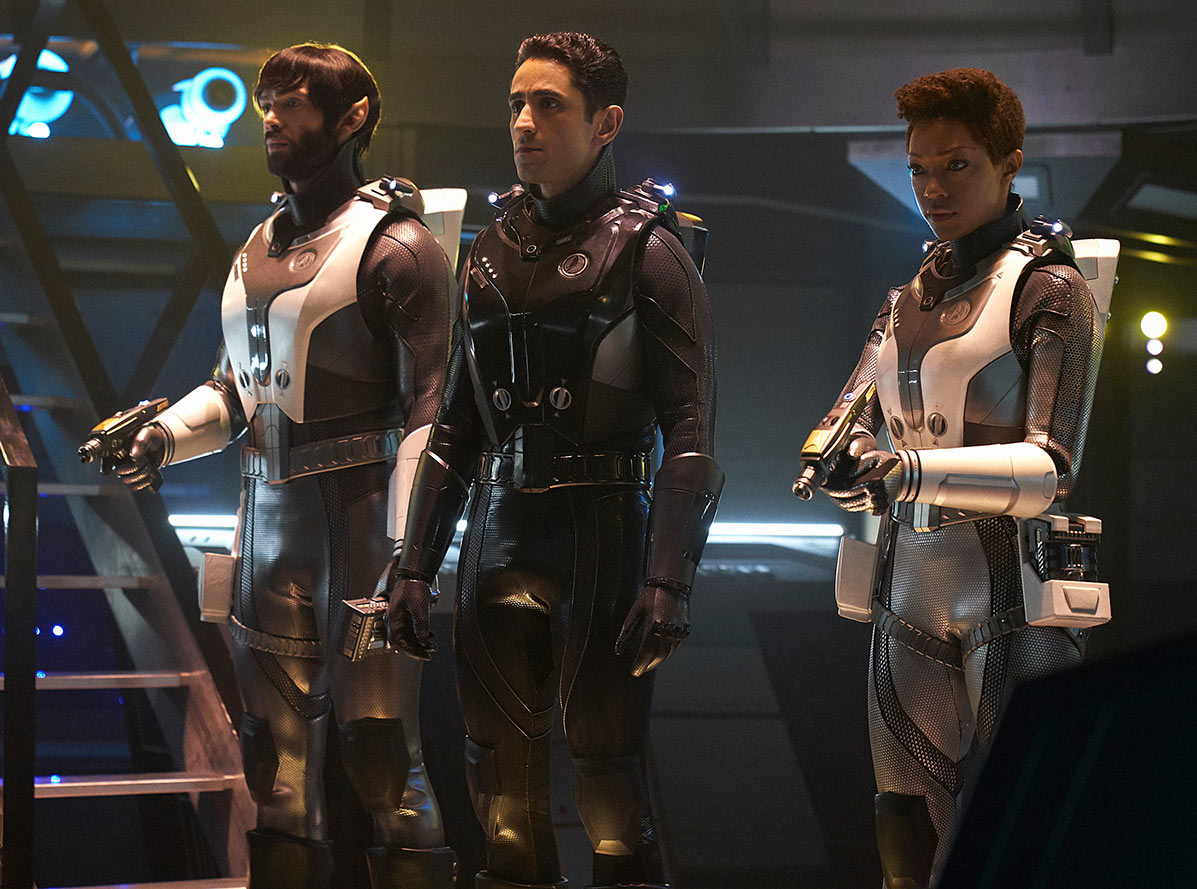
“It was like improving on a prototype,” Moreira continued, “because we got to do it twice. We got a second chance to work on them [after “Brother”] when Airiam and Burnham got to go to Section 31 headquarters [in “Project Daedalus”], which allowed us to find solutions to problems we had been working on.
Later on, we saw Spock in is own suit, and then we did a color change for the versions worn by Georgiou and Section 31. Basically, we were able to work on the EVA suits over and over again [with each episode] to make them better.”
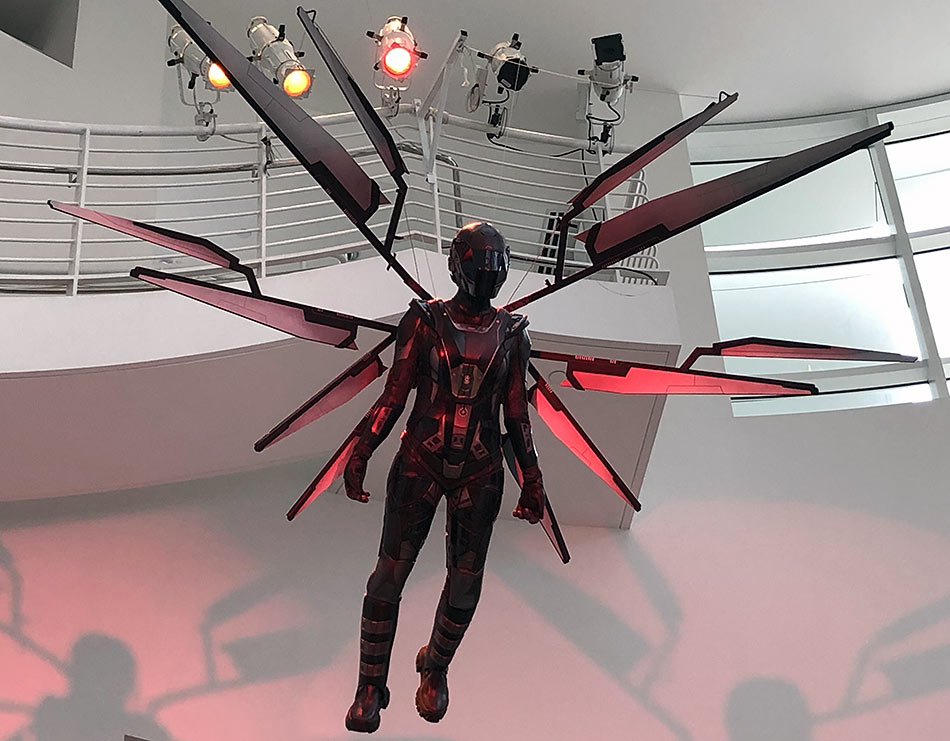
With all of this talk of props from the past, future, and present, it was only fitting that our conversation on Discovery’s Season 2 props ended on the season’s temporal technology, the time-crystal-powered Red Angel suit.
There were actually three versions built for Discovery’s second season: a pristine version seen in the “Perpetual Infinity” flashbacks worn by Gabrielle Burnham (Sonja Sohn), a damaged version presented as a kind of mannequin after her capture by the Discovery crew, and the new build worn by Michael Burnham in the season finale.
“On-screen, the Angel wings were entirely CG, though we have built an actual, physical set [for the Paley Center prop display in Los Angeles],” Moreira explained. “The suit itself is 3D-printed fabric underneath a 3D-printed soft resin, all nylon-sewn into the suit; [Sonequa] can run and jump with it, and we can fly her!”
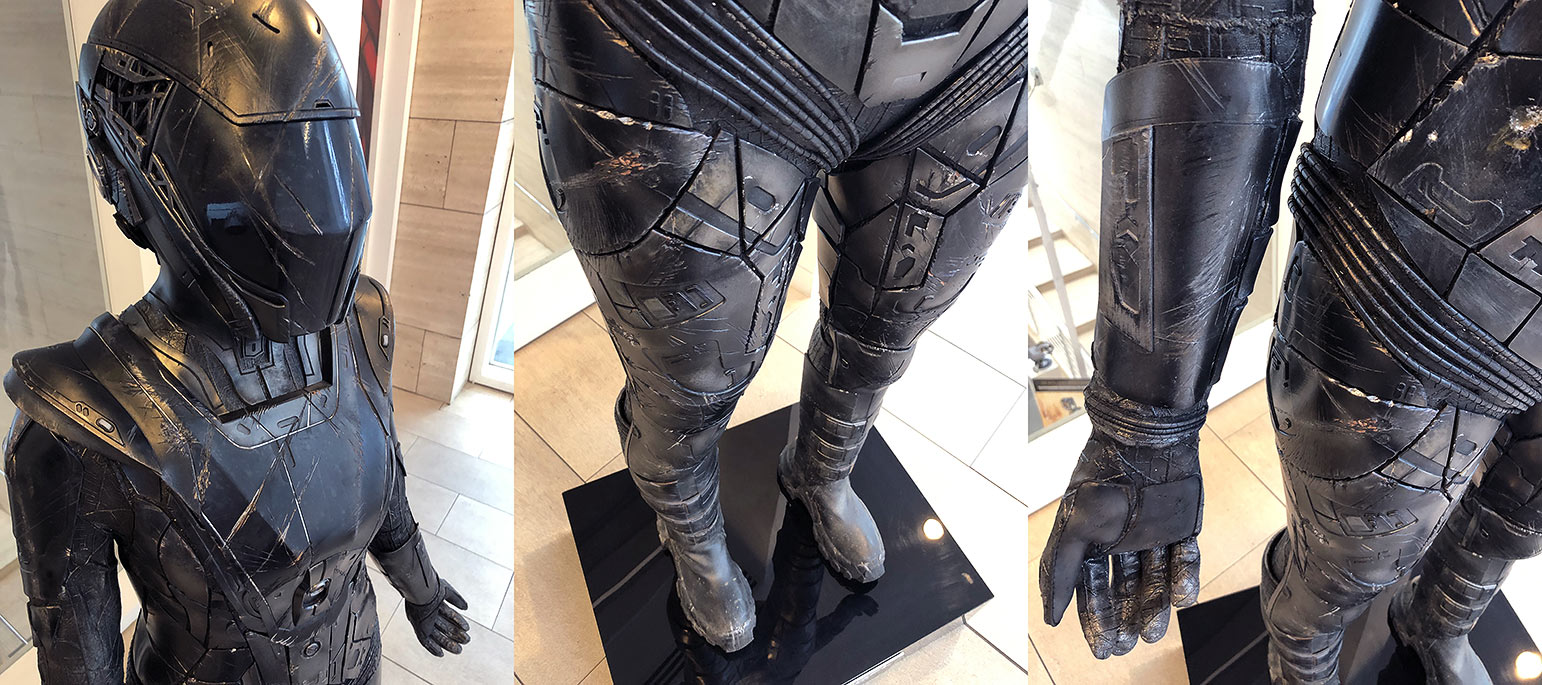
“Other shows usually wouldn’t build a visor into a suit like this,” he said,” but we built the visor into the helmets [rather than use CG], giving an authentic reflection for the camera to pick up and something for the actor to work with — but the helmet has more fans and blowers in it than any other helmet we’ve made, because the visor is so close to her face that we had to keep air blowing… otherwise it would fog up in an instant!
We went out of our way to create a helmet that was more breathable and authentic for the actors, and both [Gabrielle Burnham] and [Michael]’s suits are amazing pieces.”
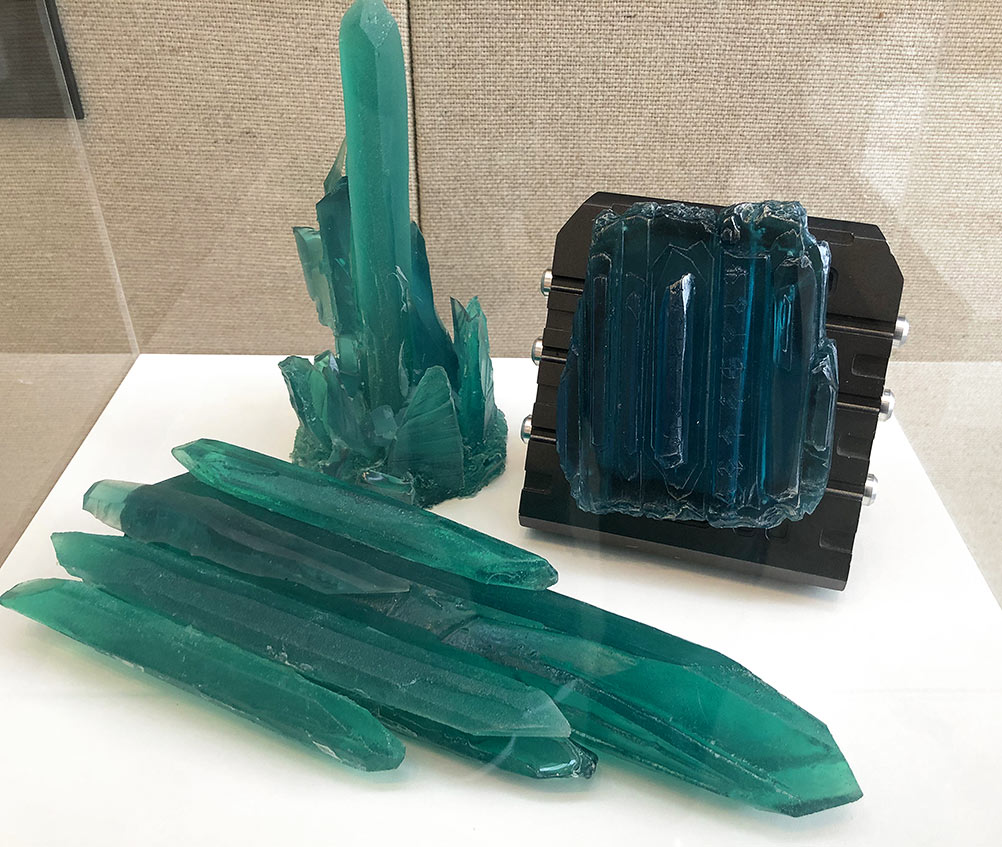
The Discovery production team is already hard at work getting prepped for the show’s third season, which is set to begin filming back in Toronto this summer. After telling me about the Trek toys he keeps on his desk at work — models of the Shenzhou and Discovery, along with some classic Trek bobbleheads! — Moreira shared his excitement for what’s next for the show as it moves to the 31st Century.
“I would just say, as a fan,” Moreira said, choosing his words carefully, “getting ready for Season 3 — from what I’ve seen and read — is really going to blow some minds. It has been a fun season to design and build for, and will be an amazing season to watch!”
While an exact return date for the series has not yet been announced, Star Trek: Discovery is expected to return in 2020 sometime after the first season of Star Trek: Picard finishes its ten-episode run — and I’ll be keeping my eyes peeled for one of those Section 31 phasers while I wait!
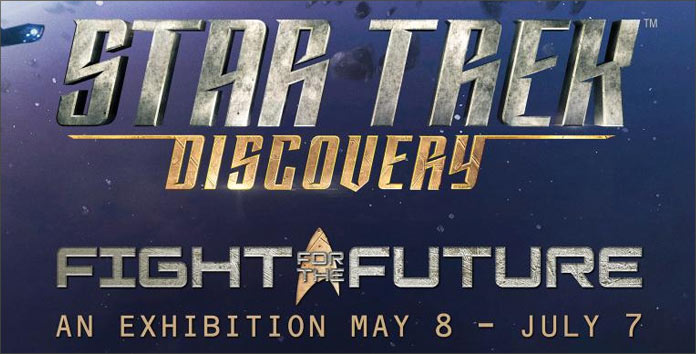
But for now, if you’re in the Los Angeles area, you can check out the real props from Discovery Season 2 at CBS’s Star Trek: Discovery — Fight for the Future exhibit, a free-to-the-public gallery which runs through July 7 at The Paley Center for Media.
While no formal plans have yet been announced, it’s hopeful that some or all of this exhibit will make its way to San Diego Comic Con and the annual Star Trek Las Vegas convention later in the summer as well, following the trend started by Discovery displays from 2017 and from 2018 at those events.
Portions of this interview have been condensed or edited for clarity.
![]()
Let us know in the comments below some of your favorite props from Season 2 of Star Trek: Discovery!
